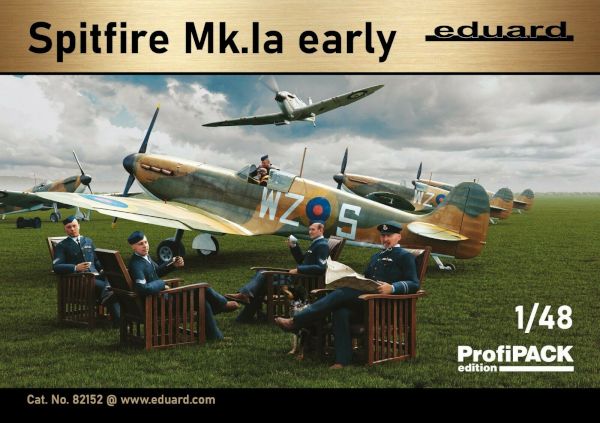
Eduard 1/48 Spitfire Mk.Ia early ProfiPACK and Overtrees
By Jacob Russell
The Plane
The Supermarine Spitfire Mk.Ia entered service with the RAF's No.19 Squadron in August of 1938. Supermarine delivered a total of 306 Mk.Ias by September of 1939. The Mk.Ia had wing armament of 8 0.303 in. Browning machine guns. The earliest aircraft had a flat canopy, fixed pitch 2 blade propeller and the 1030 hp Rolls-Royce Merlin III V-12. It had a maximum speed of 362 mph, a rate of climb of 2,530 ft. per minute and a range of 395 miles.
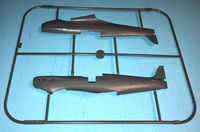
|
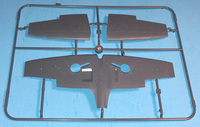
|
The Kit
This is the ProfiPACK boxing of the new Mk.Ia. It consists of 209 injection molded parts, molded in gray and clear on 6 sprues. It also includes rice paper masks and a photo etch fret containing 42 parts, some of which are pre painted. The surface detail of this kit is impressive. The fuselage features a mix of raised rivets and cowling fasteners while the wings have recessed rivets and panel lines. All surface detail is faithfully executed. The fuselage rivets are spectacular and they will look wonderful under carefully applied camouflage and some discreet weathering. The cockpit is a busy, detailed assembly that uses many of the PE parts. You can choose a decal for the instrument panel or a 4 piece plastic and PE "sandwich".
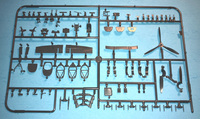
|
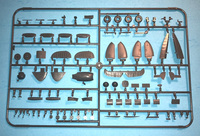
|
The photo-etch upgrades include a seat harness, rudder pedals, throttle quadrant, head armor, etc.
(The Overtrees boxing of the kit is virtually identical to the ProfiPACK boxing, but it only includes a single pair of fuselage halves, 1 each 2 and 3 blade propellers and no instructions or photo-ecthed parts. You can download the instructions from the Eduard website).
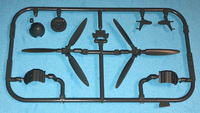
|
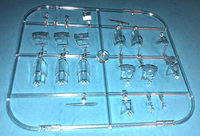
|
The 2 decal sheets (there is a smaller one for air frame stencils) are comprehensive and include 7 different decal options:
"Red 19", K9797, No. 19 Squadron, RAF Duxford, Cambridgeshire, Great Britain, October 1938. This plane was painted in Dark Earth and Dark Green over Silver with a black 2 bladed prop and spinner. The canopy and pitot tube were the early variants.
"WZ-S", No. 19 Squadron, RAF Duxford, Cambridgeshire, Great Britain, early 1939. This Mk.Ia was painted in Dark Earth and Dark Green over Silver with a black 2 bladed prop and spinner with the early "flat" canopy and pitot tube. The Yellow roundel borders were over painted with the camouflage colors.
"DL-N", K9848, No. 54 Squadron, Hornchurch, Essex, Great Britain, early 1940. This Mk.Ia was painted in Dark Earth and Dark Green with a black 2-pitch, 3 bladed de Havilland prop and spinner. The canopy and pitot tube were the early variants. The Yellow outer roundel borders were over painted with the camouflage colors. The port wing was White and the starboard Night (Black). The forward and aft lower fuselage were Silver.
"SD-H", K9938, No. 72 Squadron, Church Fenton, North Yorkshire, Great Britain, April 1939. K9938 was Dark Earth and Dark Green with a black 2-pitch, 3 bladed de Havilland prop and spinner with the early canopy and pitot tube. The port wing was White and the starboard Night (Black). The forward and aft lower fuselage were Silver and there were no upper wing roundels.
"LO-A", K9962, Squadron Leader Andrew Farquhar. CO of No. 602 Squadron, RAF Abbottsinch, Renfrewshire, Great Britain, May 1939. LO-A was Dark Earth and Dark Green with black 2-pitch, 3 bladed de Havilland prop and spinner with the "blown" canopy and pitot tube. The port wing and fuselage were White and the starboard Night (Black). The fuselage roundels were quite small and the upper port wing had a gas detector patch.
"PR-O", No. 609 Squadron, Drem, East Lothian, Great Britain, April 1940. LO-A was Dark Earth and Dark Green with black 2-pitch, 3 bladed de Havilland prop and spinner with the late "blown" canopy and armored windscreen. The port wing and fuselage were White and the starboard wing and fuselage were Night (Black). The upper port wing had a gas detector patch. The forward and aft lower fuselage were Silver.
"LO-B", No. 602 Squadron, Drem, East Lothian, Great Britain, May 1939. LO-A was Dark Earth and Dark Green with black 2-pitch, 3 bladed de Havilland prop and spinner with the late "blown" canopy and armored windscreen. The port lower wing and fuselage were White and the starboard lower wing and fuselage were Night (Black). The upper starboard wing had a gas detector patch. The plane did not have an aerial mast.

|
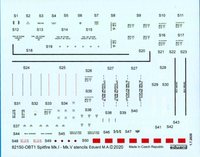
|
Eduard's instructions are well laid out. They include a parts map, a well illustrated assembly sequence, 7 color profiles and a stencil application guide. Color call outs are for GSI Creos (Gunze) Acqueos and Mr. Color and Mission Models paints. This is a first class product.
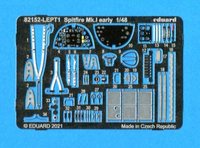
|
Conclusion
This is a superb kit. It's accurate and well detailed right out of the box and if so inclined, you can choose from Eduard's numerous photo-etched and Brassin enhancements. I recommend this kit, and I would like to thank Eduard for providing the review sample.
References
Modeler's Datafile 3: The Supermarine Spitfire, Part 1: Merlin Powered, by Robert Humphries, SAM Publications, 2000
Spitfire in action, Aircraft No.39, by Jerry Scutts, Squadron/Signal Publications, 1980
